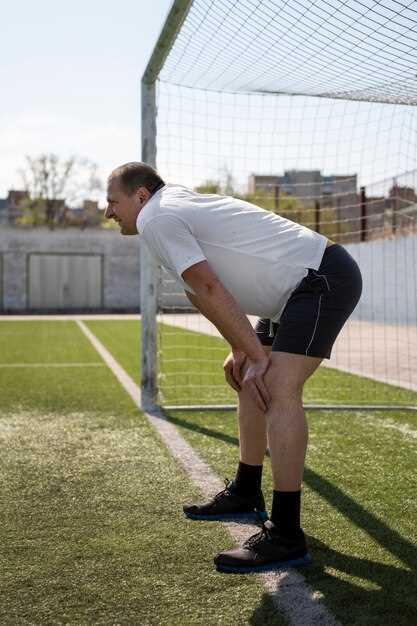

The ball joint plays a crucial role in the suspension system of your vehicle, particularly at the front. It acts as a pivot point, allowing the wheels to move up and down while enabling steering movement. Over time, these joints can wear out due to constant exposure to road conditions, resulting in several warning signs that every driver should be aware of.
One of the primary symptoms of a failing ball joint is an unusual noise coming from the front suspension, such as clicking or popping sounds during turns. This can indicate that the joint is no longer functioning properly and may lead to further complications if not addressed. Additionally, uneven tire wear may occur, as a compromised ball joint affects the alignment of the vehicle, leading to poor handling and stability.
Drivers should also pay attention to changes in steering responsiveness. If the vehicle feels loose or wanders while driving straight, it could be a sign of a worn ball joint. Regular inspections of your vehicle’s suspension system can help identify these early symptoms, ensuring a safer and smoother driving experience.
Common Warning Signs of Ball Joint Wear

Ball joints play a critical role in your vehicle’s suspension system, connecting the control arms to the steering knuckles. When these joints begin to wear, they can lead to serious handling issues and affect overall vehicle performance. Recognizing the common warning signs can help prevent further damage and ensure safety on the road.
One of the earliest indicators of ball joint wear is a noticeable increase in steering looseness. If you feel increased play in the steering wheel while driving, it may indicate that the ball joints are beginning to fail. This looseness can result in poor handling and reduced control, especially during turns.
Another warning sign is a clunking or popping noise that occurs when driving over bumps or rough surfaces. This noise typically originates from the suspension system and is often an indication that the ball joints are struggling to maintain their structural integrity.
Excessive vibration felt through the steering wheel can also point to worn ball joints. As these joints wear down, they can cause instability in the steering mechanism, resulting in vibrations that can be uncomfortable and concerning.
Visually inspecting the ball joints for significant wear or damage can be revealing. Look for cracked, frayed, or broken rubber boots, as well as excessive rust or corrosion on the metal components. If the protective boot is compromised, it may allow dirt and debris to enter the joint, exacerbating wear and leading to further issues.
If you notice uneven tire wear, particularly on the inner or outer edges, this can also be a symptom of ball joint failure. Worn joints can result in misalignment, causing uneven weight distribution on the tires and leading to premature wear.
By being aware of these common warning signs of ball joint wear, drivers can take proactive measures to address issues promptly, maintaining the integrity of their vehicle’s suspension system and ensuring safer driving experiences.
How to Perform a Visual Inspection of Ball Joints
To effectively inspect the ball joints in your vehicle’s suspension system, begin by safely lifting the vehicle and securing it on jack stands. This will allow you to access the suspension components properly.
Start by examining the outer ball joint. Look for any signs of wear or damage, such as cracks in the rubber boot. If the boot is torn or degraded, it may expose the joint to dirt and moisture, leading to premature failure. Ensure the boot is intact and securely fastened.
Next, check for excessive rust or corrosion on the metal parts of the ball joint. While some surface rust is common, significant corrosion can weaken the structural integrity of the joint. Additionally, inspect the surrounding suspension components for signs of wear, as these can also affect the performance of the ball joint.
Move on to the inner ball joint, which is typically tucked away and might require additional disassembly for a thorough inspection. Use a flashlight to illuminate hard-to-reach areas. Look for similar signs of damage, such as torn boots or visible wear on the joint itself.
While inspecting, pay attention to any unusual movement when you manually manipulate the suspension components. A healthy ball joint should not have excessive play. You can grip the tire at the 12 o’clock and 6 o’clock positions and gently push and pull. If you notice any significant movement, the ball joint may be failing.
Finally, document your findings. If any issues are found during the visual inspection, it is recommended to consult a professional mechanic to evaluate the condition of the ball joints further and determine if replacement is necessary.
Testing for Ball Joint Play and Noise

To ensure the safety and performance of your vehicle’s suspension system, it’s essential to regularly test for ball joint play and noise. A failing ball joint can lead to severe handling issues and increased tire wear.
Begin your assessment by lifting the vehicle securely with jack stands, ensuring it is stable. Once elevated, grasp the tire at the 12 and 6 o’clock positions. Apply pressure while pushing and pulling the tire in these directions. If you notice any movement or play in the ball joint, it indicates potential wear.
Next, test for lateral play by gripping the tire at the 3 and 9 o’clock positions. Repeat the same pressure technique. Excessive movement here also signals that the suspension joint may be compromised.
In addition to play, listen for unusual noises while performing these tests. A clunking or popping sound during movement can be a clear indication of a failing ball joint. This noise often results from metal-on-metal contact due to deterioration or lack of lubrication.
After completing these tests, it’s advisable to inspect the ball joint visually. Look for signs of grease leakage or damage to the rubber boot, as these factors can contribute to joint failure. If any issues are detected during your assessment, consider replacing the ball joint promptly to maintain optimal vehicle performance and safety.







